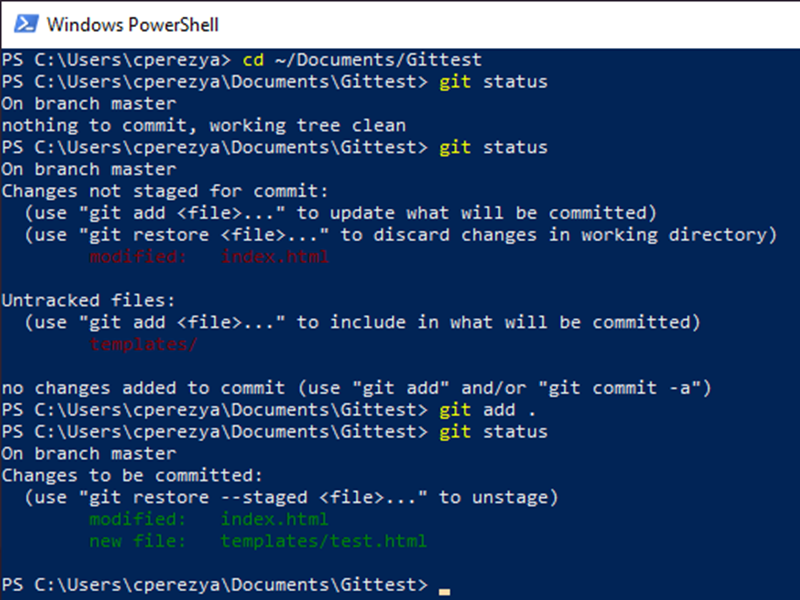Mastering Git Commands: A Beginner's Guide to Git and GitHub
What’s the Deal with Git and GitHub?
Git is a version control system that helps you track changes to your code over time. Imagine it as a magical undo button that lets you go back to previous versions of your project. It also makes it easy to collaborate with others without stepping on each other’s toes.
GitHub is like a social media platform for developers. It hosts your Git repositories and makes it easy to share your code with others, collaborate on projects, and even showcase your work to potential employers.
Now, let’s dive into some Git basics and essential commands that’ll make you a version control wizard in no time.
Getting Started with Git
Before you can use Git, you’ll need to install it on your computer. Head over to Git’s official website and grab the installer for your operating system. Once installed, you can start using Git from your terminal or command prompt.
Check Git Installation:
- Make sure Git is installed and available on the command line:
git --version
Configure Git:
- Set your username and email for Git commits:
git config --global user.name "Your Name" git config --global user.email "your.email@example.com"
Check Git Configuration:
- View your Git configuration settings:
git config --list
Essential Git Commands
Here’s a rundown of some fundamental Git commands to get you started:
git init
- What it does: Initializes a new Git repository in your project directory.
- Usage:
git init
git clone
- What it does: Copies an existing Git repository from a remote server (like GitHub) to your local machine.
- Usage:
git clone <repository-url>
git status
- What it does: Shows the current state of your working directory and staging area. It tells you which changes have been staged, which haven’t, and which files aren’t being tracked by Git.
- Usage:
git status
git add
- What it does: Adds changes in your working directory to the staging area, getting them ready to be committed. Use
git add .to add all files in the directory. - Usage:
git add <file-or-directory>
- What it does: Adds changes in your working directory to the staging area, getting them ready to be committed. Use
git commit
- What it does: Records a snapshot of your staged changes in the repository’s history.
- Usage:
git commit -m "Your commit message here"
git log
- What it does: Shows a history of commits in the repository. Use
git log --onelinefor a simplified view. - Usage:
- Detailed log:
git log - Simplified log:
git log --oneline
- Detailed log:
- What it does: Shows a history of commits in the repository. Use
git push
- What it does: Uploads your local repository content to a remote repository.
- Usage:
git push <remote> <branch>
git pull
- What it does: Fetches and merges changes from a remote repository to your local repository.
- Usage:
git pull <remote> <branch>
git branch
- What it does: Lists, creates, or deletes branches.
- Usage:
- List branches:
git branch - Create a new branch:
git branch <branch-name> - Delete a branch:
git branch -d <branch-name>
- List branches:
git checkout
- What it does: Switches between branches or restores working directory files. It can also be used to discard changes in a file.
- Usage:
- Switch to a branch:
git checkout <branch-name> - Discard changes in a file:
git checkout -- <file-name> - Restore a previous version:
git checkout <commit-hash> -- <file-name>
- Switch to a branch:
git rm
- What it does: Removes files from the working directory and staging area.
- Usage:
git rm <file-name>
Remove a Repository:
- What it does: Deletes a Git repository. Useful if you accidentally initialized a repository.
- Usage:
rm -rf .git
Putting It All Together
Let’s walk through a simple example of using these commands in a real workflow:
Initialize a new repository:
git initClone an existing repository:
git clone https://github.com/yourusername/your-repo.gitCheck the status of your repository:
git statusAdd a new file and stage it:
touch newfile.txt git add newfile.txtCommit your changes:
git commit -m "Add newfile.txt"Push your changes to GitHub:
git push origin mainCreate a new branch and switch to it:
git branch new-feature git checkout new-featureMake some changes, stage, and commit them:
echo "Some changes" > newfile.txt git add newfile.txt git commit -m "Update newfile.txt with some changes"Merge your changes back into the main branch:
git checkout main git merge new-featurePull the latest changes from the remote repository:
git pull origin mainView commit history:
git log --onelineCheck out a previous version of a file:
git checkout <commit-hash> -- newfile.txtDiscard changes in a file:
git checkout -- newfile.txtRemove a Git repository (use cautiously):
rm -rf .git
last but not least...
rm -rf .git, which allows you to delete a repository if you accidentally type git init in the wrong directory. This command completely removes the .git directory, effectively erasing the Git repository and its history. After cleaning up the mistaken repository, you can easily clone the correct repository from GitHub using git clone <specific URL on GitHub>. This ensures you're working with the right project and avoids any confusion caused by the unintended initialization.Wrapping Up
And there you have it! A quick tour of the essential Git commands to get you started. Git can seem a bit intimidating at first, but with a little practice, you’ll be managing your code like a pro. Remember, the key is to keep experimenting and don’t be afraid to make mistakes – Git’s got your back with that magical undo button!
Happy coding!







Comentarios
Publicar un comentario